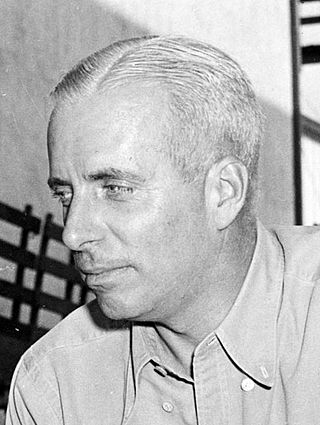
Howard Winchester Hawks was an American film director, producer, and screenwriter of the classic Hollywood era. Critic Leonard Maltin called him "the greatest American director who is not a household name." Roger Ebert called Hawks "one of the greatest American directors of pure movies, and a hero of auteur critics because he found his own laconic values in so many different kinds of genre material." He was nominated for the Academy Award for Best Director for Sergeant York (1941) and earned the Honorary Academy Award in 1974.

Victor Andrew de Bier Everleigh McLaglen was a British-American actor and boxer. His film career spanned from the early 1920s through the 1950s, initially as a leading man, though he was better known for his character acting. He was a well-known member of John Ford’s Stock Company, appearing in 12 of the director’s films, seven of which co-starred John Wayne.
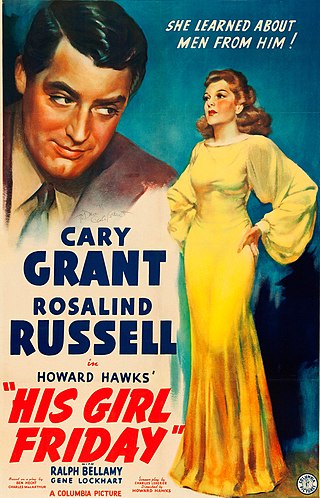
His Girl Friday is a 1940 American screwball comedy film directed by Howard Hawks, starring Cary Grant and Rosalind Russell and featuring Ralph Bellamy and Gene Lockhart. It was released by Columbia Pictures. The plot centers on a newspaper editor named Walter Burns who is about to lose his ace reporter and ex-wife, Hildy Johnson, newly engaged to another man. Burns suggests they cover one more story together, getting themselves entangled in the case of murderer Earl Williams as Burns desperately tries to win back his wife. The screenplay was adapted from the 1928 play The Front Page by Ben Hecht and Charles MacArthur. This was the second time the play had been adapted for the screen, the first occasion being the 1931 film which kept the original title The Front Page.

Mary Louise Brooks was an American film actress during the 1920s and 1930s. She is regarded today as an icon of the flapper culture, in part due to the bob hairstyle that she helped popularize during the prime of her career.

Jean Merilyn Simmons was a British actress and singer. One of J. Arthur Rank's "well-spoken young starlets," she appeared predominantly in films, beginning with those made in Britain during and after the Second World War, followed mainly by Hollywood films from 1950 onwards.
To Have and Have Not is a 1944 American romantic war adventure film directed by Howard Hawks, loosely based on Ernest Hemingway's 1937 novel of the same name. It stars Humphrey Bogart, Walter Brennan and Lauren Bacall; it also features Dolores Moran, Hoagy Carmichael, Sheldon Leonard, Dan Seymour, and Marcel Dalio. The plot, centered on the romance between a freelancing fisherman in Martinique and a beautiful American drifter, is complicated by the growing French resistance in Vichy France.

Robert William Armstrong was an American film and television actor remembered for his role as Carl Denham in the 1933 version of King Kong by RKO Pictures. He delivered the film's famous final line: "It wasn't the airplanes. It was beauty killed the beast."

In film theory, the "Hawksian woman" is a character archetype of the tough-talking woman, popularized in film by director Howard Hawks through his use of actresses such as Katharine Hepburn, Ann Dvorak, Rosalind Russell, Barbara Stanwyck, and Angie Dickinson. The best known Hawksian woman is probably Lauren Bacall, who iconically played the type opposite Humphrey Bogart in To Have and Have Not and The Big Sleep. The archetype was first identified by film critic Naomi Wise in 1971.

Hangman's House is a 1928 romantic drama genre silent film set in County Wicklow, Ireland, directed by John Ford (uncredited) with inter-titles written by Malcolm Stuart Boylan. It is based on a novel by Brian Oswald Donn-Byrne. It was adapted by Philip Klein with scenarios by Marion Orth. The film is also notable for containing the first confirmed appearance by John Wayne in a John Ford film.
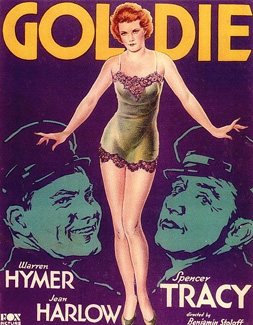
Goldie is a 1931 American pre-Code black-and-white romantic comedy film starring Warren Hymer, Spencer Tracy and Jean Harlow. The script was written by Paul Perez and Gene Towne, and directed by Benjamin Stoloff. It was made before the Hays Code was rigidly enforced. It is a remake of Howard Hawks' 1928 silent film, A Girl in Every Port.

Veda Ann Borg was an American film and television actress.
Seton Ingersoll Miller was an American screenwriter and producer. During his career, he worked with film directors such as Howard Hawks and Michael Curtiz. Miller received two Oscar nominations and won once for Best Screenplay for the 1941 fantasy romantic comedy film, Here Comes Mr. Jordan, along with Sidney Buchman.
A Girl in Every Port may refer to:
For the Term of His Natural Life is a 1927 Australian film based on the 1874 novel by Marcus Clarke, directed, produced and co-written by Norman Dawn. It was the most expensive Australian silent film ever made and remains one of the most famous Australian films of the silent era.
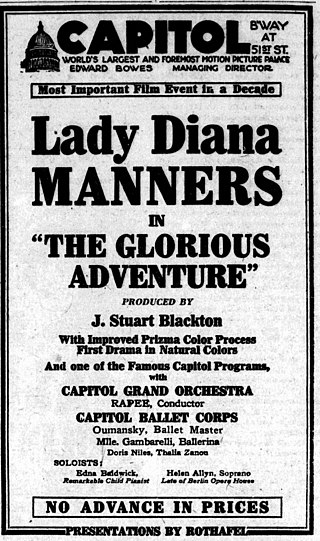
The Glorious Adventure is a 1922 British Prizmacolor silent feature film directed by J. Stuart Blackton and written by Felix Orman. The film's sets were designed by Walter Murton. It was shot at the Cricklewood Studios of Stoll Pictures in London.

Woman to Woman is a 1923 British silent drama film directed by Graham Cutts, with Alfred Hitchcock as the uncredited assistant director and co-screenwriter. The film was the first of three adaptions of the 1921 play Woman to Woman by Michael Morton. To capitalise on the success of the film, Cutts and Hitchcock made another film, The White Shadow, with Compson before she returned to the United States.

All the Brothers Were Valiant is a 1923 American silent sea adventure and romantic drama film starring Lon Chaney. The film was produced and distributed by Metro Pictures corporation and directed by Irvin Willat. The cast also features Malcolm McGregor, Billie Dove and Robert McKim. The screenplay was written by Julien Josephson, based on the eponymous novel by Ben Ames Williams. The film was also known as Cold Courage.
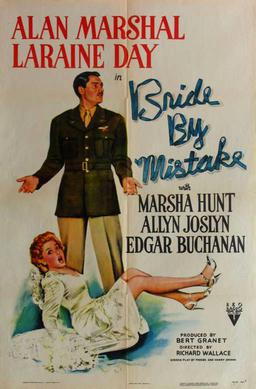
Bride by Mistake is a 1944 American romantic comedy film directed by Richard Wallace, and starring Alan Marshal and Laraine Day.
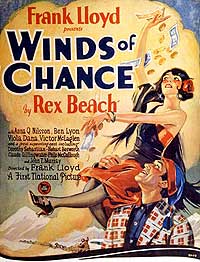
Winds of Chance is a 1925 American silent drama film directed by Frank Lloyd and produced and released by First National Pictures.
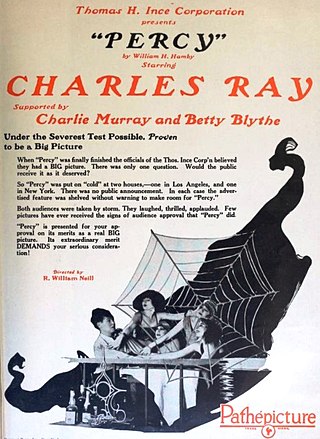
Percy is a lost 1925 American silent comedy film directed by Roy William Neill and starring Charles Ray, Louise Dresser and Victor McLaglen. The film is based upon the novel The Desert Fiddler by William Henry Hamby.

















